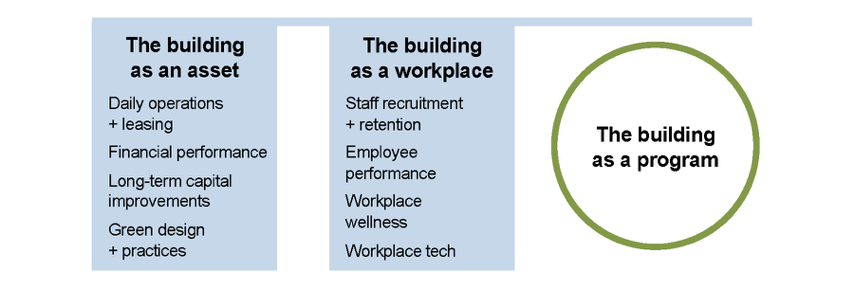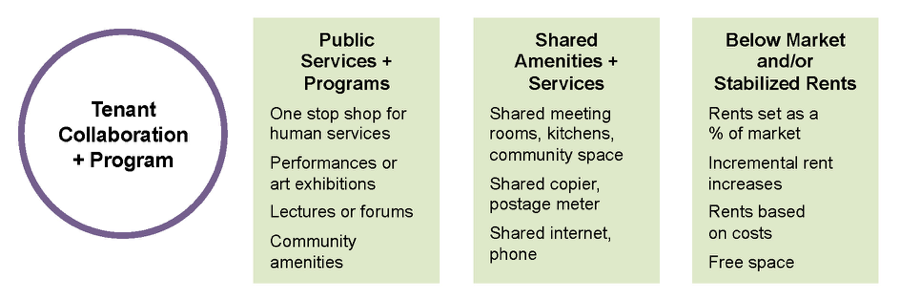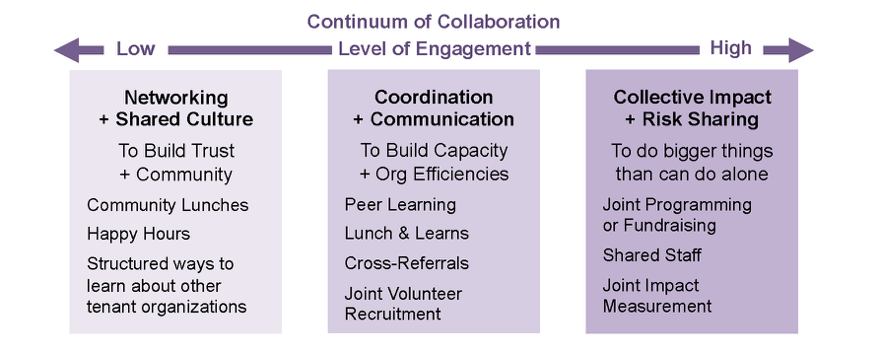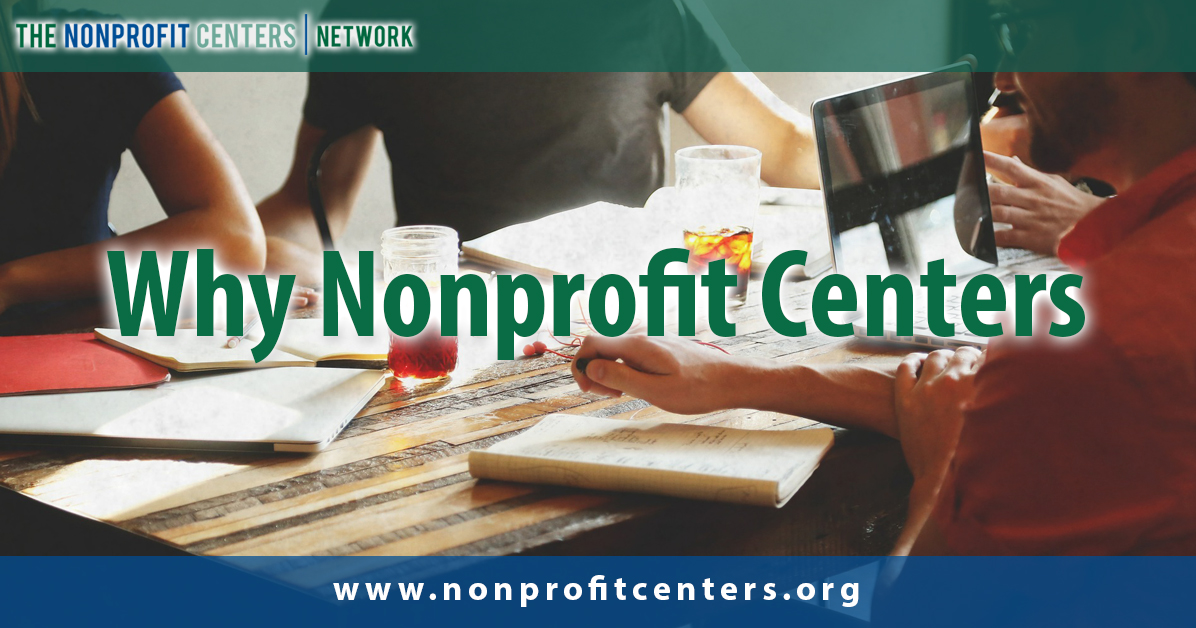When I lived in Toronto, I worked for an organization that made its home at the Centre for Social Innovation. The Centre had been open for just a few months, and it was great to be a participant in the burgeoning space as the tenant community gelled and management explored how it was going to best meet the needs of the center’s community. As someone who has spent much of their working life in nonprofits and studying nonprofit management, I was quickly hooked on this model of nonprofit shared space that looks to create efficiencies through shared amenities/office services and bolster effectiveness through peer learning and collaboration between tenant community members.
While I left Toronto, my interest in shared space continued. After a brief tenure in Seattle, I ended up in San Francisco working for Tides. There I was briefly part of the Nonprofit Centers Network (NCN) team before helping to run the Thoreau Centers in San Francisco and New York as a part of the Tides Real Estate team. It was great to be exposed to NCN and spend another four years digging in on how centers operate and what they can accomplish by providing quality back office services and building a dynamic tenant networks.
Today, with a much deeper understanding of their potential, I’m as excited as ever for what nonprofit centers can offer as a platform for organizations to come together to achieve more then they can on their own. While getting to deep collaboration between members of shared space can be a journey (and not always a center’s destination), along the way nonprofit centers strengthen their community members by providing secure space, access to business systems, robust tenant communities and important neighborhood infrastructure – especially when it comes to facilities that focus on arts and culture or direct human services.
Before further exploring the value and promise of nonprofit centers, it’s worth touching on a couple of fundamentals.

First, for those reading who may not yet be familiar with nonprofit centers, some further definition is likely helpful. Nonprofit centers are shared facilities that come in a range of shapes and sizes and with different areas of focus. They can be home to just two or three organizations or large facilities with dozens of tenants. They can be coworking spaces, administrative offices, social service hubs or shared arts and culture facilities. They can have a single nonprofit owner that rents to other organizations or have shared ownership structures like an office condo building. They can look to serve a specific mission theme (like sustainability or international development) or be more generalist in their tenant selection. Regardless of the form they take all nonprofit centers operate their buildings as mission driven space.
Second and beyond their mission, nonprofit centers are still commercial real estate. For those operating these facilities they must think of the building as an asset and the building as the workplace. The building as an asset means that it must meet the financial objectives of the owner(s), have solid daily operations and professional leasing and a long-term plan to meet the capital needs of the project. The building as a workplace speaks to the need of the facility to be responsive to a changing workforce including design, amenities and technology that enhance employee performance, engagement and wellness. Regardless of the kind of nonprofit center being run, operators still need to get these two core functions right, and when done well, they contribute enormously to the overall impact of the building.

With these pieces in mind, we can turn to what I believe makes nonprofit centers special – the building as a program – and particularly the collaborative work that can happen within the spaces as members of the tenant community build trust and begin to take risks with one another to achieve greater impact than they alone.

The foundation of programmatic work for most nonprofit centers is to provide secure space for organizations and achieve some level of below market rate rent (or reduces occupancy costs/build equity for those that own). After that, nonprofit centers often look to create some organizational efficiencies through shared services and amenities. These can include shared conference rooms, shared kitchen, shared copier, Internet service, shared reception and more. Looking outward, the building as a program can also mean bringing new community infrastructure sometimes offering public program like lectures and forums, being a place for workshops and trainings, being a home to visual and performing arts or providing set of human services as we find with social service hubs. All of these programmatic elements are important to bringing new efficiencies and infrastructure to organizations and communities. While these core offerings are important to the success of each tenant organization, they also lay they the groundwork for collaborative work between tenants that can spur innovation, build capacity and scale results.

Nonprofit centers can serve as an important platform for trust building and can move its community members along a continuum of collaboration. This program focus of centers often starts at the basic level of the building as a network bringing together members to learn more about one another and to begin to uncover shared interests and mission overlap. This often takes the form simple social events or sometimes more structured activities that engage tenants with one another. Beyond networking, some centers go deeper by offering opportunities for peer learning and low risk coordination like cross-referrals and joint volunteer recruitment. All of this is a pathway establish communication between groups and build trust so that organizations can take on bigger joint efforts where both risk and reward are higher. These ventures can include joint fund raising, sharing staff, launching new joint programs or any other effort where two or more organizations join their their resources to foresee some new or scaled impact for the people or place they serve.
Nonprofit centers provide many benefits to the organizations that make their home in these facilities. From having more secure space and affordable rents to easing the administrative load though quality amenities and services, centers push boundaries of what a multitenant building means. But that’s just the beginning. The real power of nonprofit centers is their potential as platforms for robust collaboration and risk-taking between organizations. Fostered by their proximity and supported by center staff, center tenants have a pathway to build trust and learn from one another so they can think bigger and do more than then can do on their own.



Get to know about nonprofit shared offices for the first time. This is a great idea. Co-working community leads to great productivity too. Thanks for sharing!